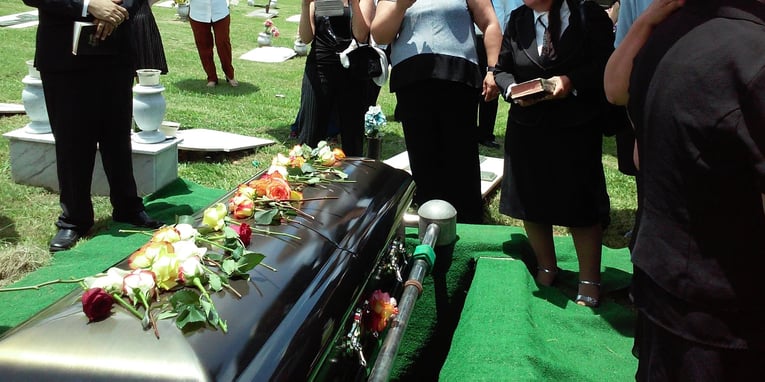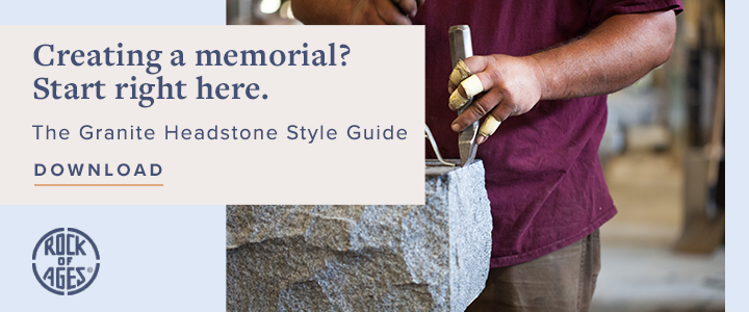
No one (no one we know of, anyway) looks forward to the hard task of planning a loved one’s funeral. Especially when it means having to numb yourself to grief so you can take care of the financial, emotional, spiritual and practical obligations. So, the fact that more and more people are making their own funeral plans in advance is GREAT news.
Still, the vast majority of funeral planning isn’t done in advance, and so the burden of making those arrangements usually falls on a relative or close friend. Whether the loved one’s death was unexpected or not, funerals almost always need to happen in a hurry. Which brings you to this post where you can find a simple step-by-step process to planning a funeral. We’ll also include links to helpful resources.
For a variety of health, spiritual and legal reasons, the time between death to burial/disposition of the body is almost always within 3-7 days. If you’re charged, either by family consensus or by default, to handle the necessary details to plan a simple funeral, that’s no time at all.
Fortunately, there are several resources available that can help you organize all your most important tasks so you can honor your loved one and reserve some of your time and energy to devote to your own grief.
Here is a list of things to prioritize if you’re planning a funeral in a hurry:
1. Come to terms with who is/are the decision makers.
The next few days will require many decisions. You’ll want to have a clear idea at the outset of whose approval you’ll need for each one.
2. Decide on burial or cremation.
If the deceased made it known that cremation was his or her wish you have a number of options to consider for the ashes. For the moment you can direct the funeral home to deliver them to you in a simple vessel. In the future you can decide to create a permanent memorial. Click here for some granite memorial options you may not know about.
3. Choose a funeral home and set the relationship with the funeral home.
Do you want the funeral home to make all the decisions/package or do you want control over all the details? Be clear on what the funeral director is providing and is responsible for, what is included and what is not included. It’s best to have a clear understanding of the scope of funeral services right up front. Ask to see all services and fees in writing before agreeing.
Some funeral homes also sell headstones and cemetery memorials. You can open yourself to more options by contacting a memorial retailer separately. When you work directly with a Rock of Ages authorized retailer you get the chance to work directly with the team designing and crafting your memorial. Click here to contact a memorial counselor.
4. Choose a ceremony and connect with a religious representative if appropriate to conduct the ceremony.
If the deceased was part of a faith community his or her pastor or rabbi can be a resource to connect with friends of the deceased you may not know, and as a leader for the memorial service.
5. Choose a cemetery
This is important for a number of reasons. The location should honor any wishes the deceased has shared, but also be accessible to family. There are other considerations such as religious affiliation or past military service, plus the regulations that some cemeteries place on headstone design. If your loved one asked for an upright memorial or large scale monument you want to be sure these are accepted before you sign a contract. Click here for more tips on how to select the right one.
6. Find out if military honors are in order
If your loved one was a veteran there may be military funeral honors available. The US Dept of Veterans Affairs provides a helpful step-by-step guide to planning a veteran’s funeral that includes directions on how to communicate with the funeral director. Read it here.
7. Take care of immediate needs at the deceased’s home
The first days after someone’s death doesn’t need to be the time to sort through effects, but there may be some details at his or her home that you need to take care immediately. The National Funeral Directors Association has a helpful checklist that offers practical do-right-away steps you may not have even considered like visiting the deceased’s home to care for animals, or even to clean out the refrigerator.
Thankfully, not all the most important details of honoring someone’s life need to be handled right away. One important consideration is the grave marker. After the funeral you will have plenty of time to select a headstone or other cemetery monument. It’s an important step and one you’ll want to spend some time on with a professional who can show you all your options. It is possible to buy a headstone online, but we always recommend going to an authorized Rock of Ages retailer. Their in-person attention will help you navigate the process easily (they’ve got first hand knowledge of local cemetery regulations) and result in a headstone you’re proud of. If you haven’t chosen your cemetery yet, click here for tips on selection.
It takes about 3-4 weeks to create a simple flat grave marker, about 12 weeks to create an upright headstone and even longer for a more elaborate memorial. When the headstone is finally set you and friends and family may want to plan a time together to visit the cemetery together to mark the milestone.
As you remember your loved one over the next few days think about what made him or her special. You can translate these unique traits into design details for a headstone that is one-of-kind. To get inspired, download our granite headstone style guide.
